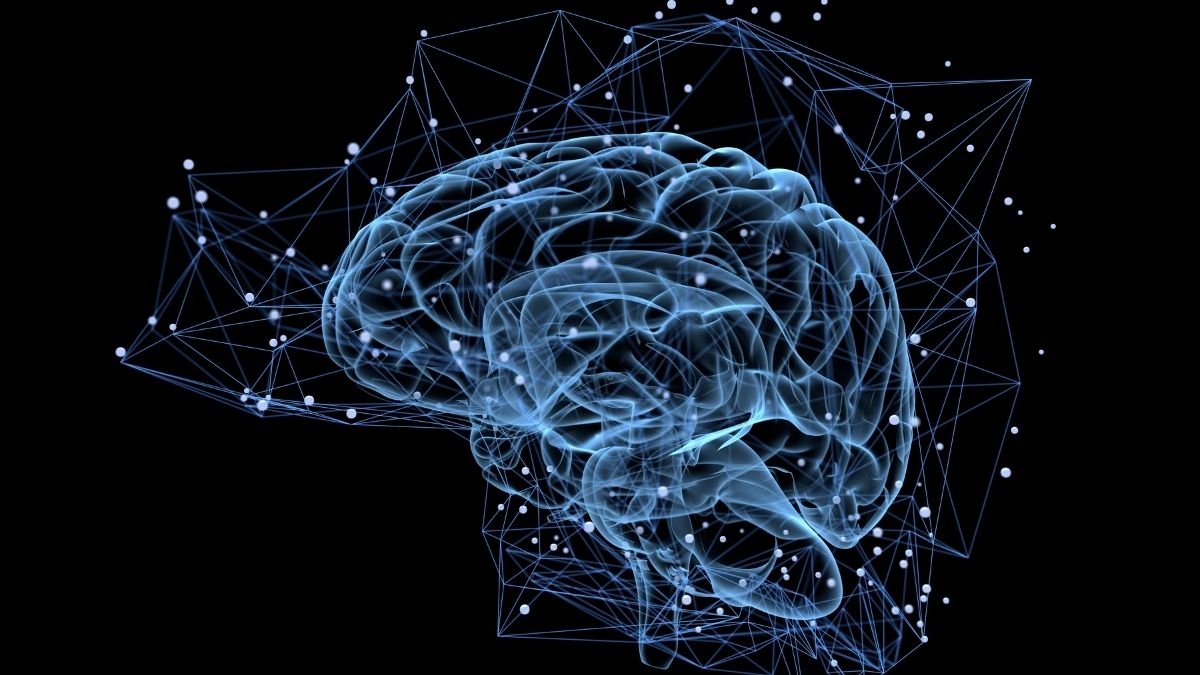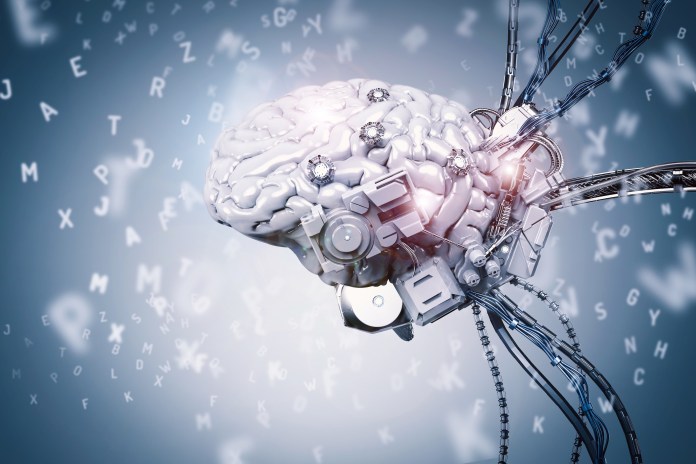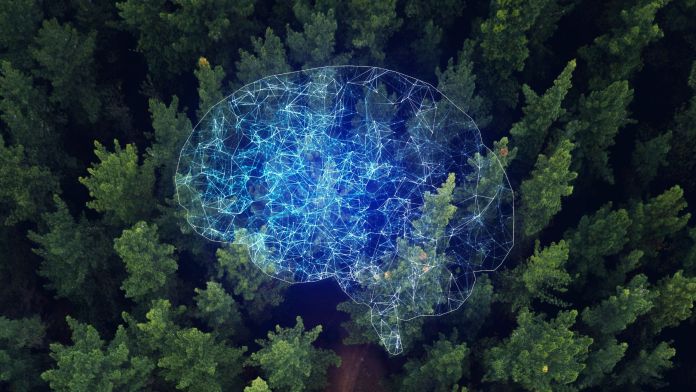
In the few minutes, you’ll spend reading this article, I’ll tell you about a completely new type of artificial intelligence, name the design features and benefits, and outline the immediate prospects and potential long-term consequences of implementing this technology in real life. We will have an impact on the future if we work together.
This is the fourth in a series of articles about the nature of human intelligence and the future of artificial intelligence systems. We discovered in the previous article, “The Secret of Human Intelligence,” that human intelligence can function as a classic binary system-symbiosis, thanks to the structural features of transmembrane proteins in ion channels of brain synapses.
At first glance, it may appear that this novel and unusual neurophysiological concept is only of interest to doctors and biologists. However, this idea from the world of neurophysiology provides us with the opportunity to create a very unusual artificial intelligence.
A new type of artificial intelligence: technological symbiosis with traditional electronic systems
All existing artificial intelligence systems have one thing in common: they are all built as single vertically controlled electronic complexes that operate using algorithms of varying complexity. The ability to centralize control is an unavoidable feature of any man-made electronic computing system. We simply do not know how to build in any other way.
But, instead of the next modernization of the vertically integrated electronic system, what if we mimic nature’s maneuver and follow the path of unification to create a technological symbiosis of the human brain and the computer system?
If nature, our mind’s creation, followed the path of symbiosis (combining the reflexive and intellectual components). And it’s possible that this is the quickest and most effective way to modernize intelligent systems.
A new AI system for a single user
A new type of artificial intelligence will evolve into a bioelectronic hybrid, in which a living human brain and a machine collaborate in a dual complementary system. Both components will complement and reinforce one another, resulting in something entirely new that neither nature nor designers of fully electronic systems have seen before.
We will become acquainted with a new type of individual artificial intelligence based on a neurocomputer interface that directly connects the neurons of the human brain and a computer.
The system’s heart, or how will the neurocomputer interface work?
Despite the enthralling prospects of this path, there have only been a few attempts in the world to create a direct interface between the human brain and a computer. Elon Musk’s Neuralink was one of the most well-known. The weakness of these projects is that they adhere to the traditional surgical path, failing to overcome two fundamental obstacles.
The first barrier is the inaccuracy of individual interpretation of local brain activity foci. Simply put, each of our brains is to some extent unique in terms of which groups of neurons are responsible for specific functions. But this is only half the battle. Worse, because of plasticity, the detailed picture of brain activity changes all the time.
The signal crossover point is the second and, to be honest, the most difficult obstacle. Essentially, this is the point at which an artificial electronic signal is converted into a biological nerve impulse and vice versa.
How to Make a New Circuit, or How to Get Rid of Wires and Surgeons

The transmitting and receiving parts of the neurocomputer interface will be completely separated in the new artificial intelligence system, resulting in two completely different communication mechanisms.
From biological tissue to computing device
The receiving component (responsible for receiving a signal from biological tissue) will be a network of inactive marker objects (ultra-small nano-sized beacons integrated into living tissue), the state of which will be remotely monitored by an active external component of the system (scanner). A marker object is a biologically neutral molecular structure that changes conformational state in the presence of a nearby weak electrical charge (in the field of view of an external scanner) (a neuron at the stage of pulse generation). This technological technique will allow the transmission of information about the existence of a signal to replace the direct transmission of a signal from living neurons to a computer system. As a result, the receiving portion of the neurocomputer interface will become a non-invasive (non-traumatic) mechanism. There is no need for costly surgical procedures in such a scheme, and molecular markers can be injected into the body via a simple intravenous injection.
From machine to living tissue
The transmitting component (on the way from the computer to the biological tissue) will remotely transmit the signal only to synapses, rather than neurons, as they are currently attempting. The transmitting part of the interface will use marker objects (receiving part beacons) as points of orientation in space (addresses of neurons) and feedback sources.
Surprisingly, the signal that will only be sent to synapses must be non-electrical in nature. This will allow us to generate an artificial signal (nerve impulse) in the neurons of the brain that is exactly the same as the physiological one. As a result of the stimulation of synaptic plasticity, the neurons of the human brain will actively participate in the formation of lines of dynamic interaction with the transmitting part of the neurocomputer interface. The brain tissue will form a connection with the interface’s transmitting structure.
Furthermore, installing such an interface will not necessitate the use of highly qualified medical personnel, making the system more user-friendly.
What do the movies Matrix and the new AI have in common?
It is critical to understand that the described scheme will allow for controlled excitation and monitoring of a single neuron’s response. This discreteness implies that the interface’s bandwidth will be sufficient to transmit directly to the human brain an artificial reality that is completely indistinguishable from physiological reality. You will not only be able to see, hear, and feel the artificial reality, but you will also be able to move around in it in the same way that you do in the real physical world.
In place of words and letters, there is only a nervous impulse
The brain and computer will be able to exchange data directly thanks to the new type of neurocomputer interface, eliminating the need for intermediary communication protocols such as sound commands or letter symbols. The brain and the computer will communicate using a set of impulses with immediate meaning and no symbolic interpretation. As a result, interacting with a machine will feel more like interacting with intuition than with an electronic device. Mutual adaptation of components (brain and machine) will take some time (months to a year), but it will allow ignoring the language barrier and even literacy. Unlike modern computers, the new personal AI system can be used by someone who cannot read or write.
Not merely a user interface
Although the neurocomputer interface is the most important aspect of the complex, it is not the only feature of the new artificial intelligence system. When we refer to a symbiotic machine or electronic component, we are referring to a software package that bears little resemblance to traditional artificial intelligence systems.
The core of the new system’s electronic component will be an unusual program that operates on direct streaming communication of templates (pre-prepared answers). Because this program will not actually perform any calculations, the system’s core will be able to maintain tremendous performance, allowing it to generate the massive volume of data exchange required for synaptic discreteness. Other software package components will be enhanced deep learning utilities that will not directly participate in the dialogue with the biological tissue of the brain but will provide service and individual adaptation of the core streaming program.
A new type of artificial intelligence will be unique not only because it will be designed to work with a single user, but also because it will be the result of a direct adaptive interaction of the learning software package with a specific person’s living brain.
In fact, as the machine gradually adopts a specific person’s behavioral habits, it will become its artificial reflex (unconscious) part, while the biological brain, as it becomes accustomed to the machine (via synaptic plasticity), will increasingly rely on the computer system’s strength and capabilities. In general, we will see how a biotechnological neurocomputer symbiosis is formed: a new type of artificial intelligence, thanks to the imperceptible but constant work of the neurocomputer interface.
Nature’s emergence brain magic

We will be able to maximize the effect of emergence by creating artificial intelligence by combining fundamentally different elements (biological tissues and an electronic system) (the birth of new properties that are not inherent in the combined elements separately).
Biotechnological symbiosis will have properties that a biological brain and a computer system cannot achieve separately.
The human brain is a very slow and frankly weak information processing mechanism, but the biological system has plasticity, creativity, and energy efficiency that electronic systems do not have. Furthermore, the living brain is an experienced tactician who understands the reality of the surrounding three-dimensional space.
Computer systems, on the other hand, not only process information faster than humans, but they also outperform biological tissue in terms of signal transmission speed by 3 million times! Add to this a digital memory capable of clearly and reliably manipulating an inconceivable amount of digital data, as well as the ability to easily enter direct communication with any technical device or the Internet.
All of this suggests that combining the human brain and computer system into a single artificial intelligence complex will not only increase their overall efficiency but will also result in the creation of a completely new unusual system: a new type of artificial intelligence.
We will see how the true magic of new properties is born by combining the brain and the machine: the magic of emergence.
Why is such a system required at this time?
The primary reason is the colossal information explosion. Every 18 months, the amount of digital data on the Internet doubles. From 1997 to 2002, humanity produced more information than in the entire preceding history.
The same amount of data is now generated in a matter of months. As a consumer of information, humanity is catastrophically lagging behind, and this imbalance is growing by the minute.
In fact, a person no longer requires new information as a product, but rather assistance in the conditional “digestion” of this product.
This fact creates a new window of opportunity for new technology. Your personal artificial intelligence system will enable you to analyze all of the information available on the Internet, not just what appears on the first page of Google search results.
The increasing volume of information produced by humanity will enable the creation of millions of IAIs (individual artificial intelligence systems) with ever-increasing performance.
A person equipped with his own AI will consume information thousands of times faster than traditional information consumption based on biological (sign or acoustic) communication systems.
Your own artificial intelligence—not just new ways to search the web…
This article is about a fundamentally different concept of artificial intelligence, not just a new system (AI). Your personal artificial intelligence system will know you, your personality, your requests, and preferences better than you do; it will be a part of you as well as your creation and extension: your digital shadow.
Man will evolve into a new type of living being
After 5-10 years of coexistence, the complementarity of AI components (brain and computer system) will reach a point where the system can perform several complex behavioral and communicative complexes (such as mechanical work or driving a car) reflexively (automatically). As a result, a person will be able to perform a wide range of routine tasks without strain.
The economic business landscape is changing so rapidly that it is difficult to keep up.
A personal artificial intelligence system will replace a computer, smartphone, car autopilot, and other devices. In a matter of minutes, any human skill or knowledge will be available for purchase or sale on the Internet. The arduous and exhausting training that we have become accustomed to will gradually become obsolete. The limiting component of the majority of disabilities will be removed.
In place of an epilogue
When I describe the new system’s properties, I understand that many people find it difficult to believe in the reality of such a technology. However, this concept is based on a significant amount of scientific work completed at the end of the last century. Over the last two decades, I’ve been able to piece together all of the details of this extremely complex interdisciplinary project and, using new data, find solutions for previously unreachable structural elements.
I understand that the traditional model of neurocomputer interface based on surgical implantation is easier to grasp than the concept of using molecular beacons and transmembrane proteins at synapses. But I refuse to give up hope and will continue to look for a way to make the unthinkable a reality.
Everyone expects a strong AI to be built by an engineer, but a doctor may be standing at the birthplace of true AI.
Learn more from Artificial Intelligence and read What Is Artificial Intelligence (AI) and How Does It Work?




